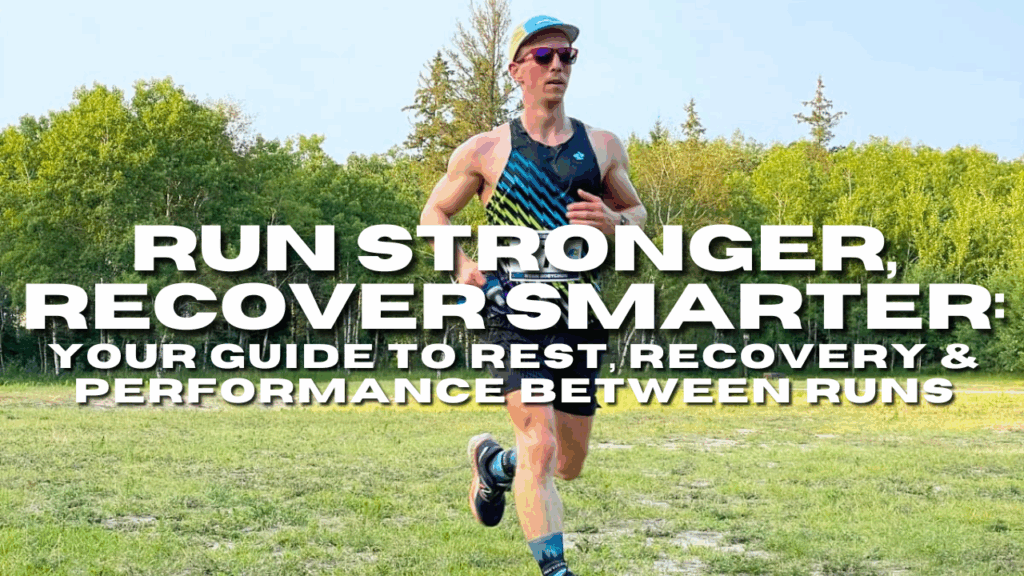
Most runners think performance gains come from running harder or farther. The truth? You don’t get stronger during your runs—you get stronger in between them.
Whether you’re training for a personal best or just running for clarity and health, how you recover after each session is just as important as the miles logged. At White Lion Strong, we don’t just coach athletes to run—we coach them to recover better, move pain-free, and stay in the game long term.
Here’s what you need to know about post-run recovery, rest days, run types, and optimal scheduling for performance and injury prevention.
Why Recovery Matters: From a Coach & Physio’s Perspective
Running is catabolic. It breaks muscle down, taxes your joints, and stresses the nervous system. Without proper recovery:
- Muscle breakdown outweighs repair
- You plateau—or worse—burn out
- You increase risk of overuse injuries (shin splints, IT band syndrome, plantar fasciitis)
Recovery is where the magic happens. No recovery = no adaptation.
How Often Should You Run Per Week?
There’s no one-size-fits-all answer. But here’s a general breakdown based on training level:
| Experience Level | Runs per Week | Minimum Recovery Between Runs |
|---|---|---|
| Beginner | 2–3 | 48–72 hours |
| Intermediate | 3–4 | 24–48 hours |
| Advanced | 5–6 | 12–36 hours (depends on intensity) |
If you’re doing high-intensity intervals or long-distance runs, you’ll need longer recovery than after an easy jog.
Types of Runs & How to Space Them
1. Long Slow Distance (LSD)
- Purpose: Aerobic base, endurance
- Recovery: 48–72 hours (especially if >60 minutes or high mileage)
- Best scheduled: Once per week
2. Tempo Runs
- Purpose: Lactate threshold improvement
- Recovery: 48 hours
- Best scheduled: Once every 4–6 days
3. Interval Training (HIIT-style)
- Purpose: Speed, VO₂ max, power
- Recovery: 48–72 hours (due to muscular and neural fatigue)
- Best scheduled: Once per week for beginners, twice for advanced runners
4. Recovery Runs
- Purpose: Promote circulation without adding stress
- Recovery: 12–24 hours after hard sessions
- Best scheduled: The day after a long or intense run
Alternate intensity to protect joints and build balanced fitness.
Sample Weekly Running Schedule
Intermediate Runner Goal: 4 Days/Week
| Day | Workout |
|---|---|
| Monday | REST or cross-training |
| Tuesday | Intervals |
| Wednesday | REST or recovery jog |
| Thursday | Tempo Run |
| Friday | REST |
| Saturday | Long Slow Distance |
| Sunday | Light recovery run or yoga |
Top Recovery Strategies (That Actually Work)
1. Sleep Like a Pro
Sleep is your #1 recovery tool. Aim for 7–9 hours per night to allow for muscular repair, hormone regulation, and central nervous system recovery.
Athletes who sleep less than 7 hours per night show significantly higher injury rates (Milewski et al., 2014).
2. Refuel Wisely
- Within 30–60 minutes post-run, aim for a mix of carbs + protein (e.g., banana + protein shake).
- Hydrate with electrolytes if you’ve sweat heavily.
3. Mobility & Active Recovery
Use active recovery (walking, light cycling, mobility work) to:
- Increase circulation
- Clear metabolic waste
- Promote neuromuscular reset
✅ 4. Soft Tissue Work
Foam rolling, massage guns, and trigger point therapy reduce delayed onset muscle soreness (DOMS) and improve muscle quality (Cheatham et al., 2015).
✅ 5. Monitor Signs of Overtraining
Watch for:
- Persistent fatigue
- Decreased performance
- Mood swings
- Elevated resting heart rate
If these show up—scale back.
Backed by Research
- Cheatham et al. (2015) showed that foam rolling improves short-term flexibility and reduces post-exercise soreness.
- Milewski et al. (2014) found that adolescent athletes who slept <8 hours had a 1.7x greater injury risk.
- Hausswirth & Mujika (2013) emphasized that post-exercise cooling strategies and nutritional timing are critical in multi-day running events.
Final Thoughts: The Strong Rest Hard
At White Lion Strong Gym, we train athletes to run smarter—not harder. That means treating recovery as a skill, not an afterthought. If you want to maximize your results and longevity in running, give your body the time, fuel, and care it needs.
It’s not about doing more.
It’s about doing it better.
📖 References (APA Style)
Cheatham, S. W., Kolber, M. J., Cain, M., & Lee, M. (2015). The effects of self-myofascial release using a foam roll or roller massager on joint range of motion, muscle recovery, and performance. International Journal of Sports Physical Therapy, 10(6), 827–838.
Hausswirth, C., & Mujika, I. (2013). Recovery for performance in sport. Human Kinetics.
Milewski, M. D., Skaggs, D. L., Bishop, G. A., Pace, J. L., Ibrahim, D. A., Wren, T. A., & Barzdukas, A. (2014). Chronic lack of sleep is associated with increased sports injuries in adolescent athletes. Journal of Pediatric Orthopaedics, 34(2), 129–133. https://doi.org/10.1097/BPO.0000000000000151